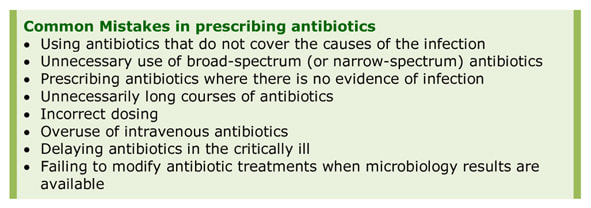Antimicrobial Stewardship
It is widely acknowledged that 50% of antibiotic prescriptions are inappropriate; meaning that the antibiotic is incorrect for the condition, the dose is wrong or infection is not the actual diagnosis, therefore antibiotics are not the correct management. Global antibiotic resistance is becoming increasingly prevalent and worryingly the world faces a post-antibiotic era where there are no longer antibiotics to treat common infections.
Antimicrobial stewardship is the response to the increasing misuse of antibiotics. It promotes the use of the right antibiotic, at the right dose, route and duration, for the right infection at the right time in order to improve patient care whilst reducing antibiotic resistance. At the forefront of this fight are Antimicrobial Pharmacists; specialist clinical pharmacists who help optimise antibiotic use within hospitals and the community.
Antimicrobial stewardship is the response to the increasing misuse of antibiotics. It promotes the use of the right antibiotic, at the right dose, route and duration, for the right infection at the right time in order to improve patient care whilst reducing antibiotic resistance. At the forefront of this fight are Antimicrobial Pharmacists; specialist clinical pharmacists who help optimise antibiotic use within hospitals and the community.
The Role of the Antimicrobial Pharmacist involves:
- Restricted antibiotics which specifically require the approval of a Microbiologist or Infectious Diseases Physician before their use
- Intravenous to oral switching to reduce the unnecessary use of IV antibiotics
- Stop and review to reduce unnecessarily long courses of antibiotics
- Expert advice regarding antibiotic usage in specific individual patients in conjunction with Microbiologists or Infectious Diseases Physicians
- Participation in Route Cause Analysis (RCA) for cases of Healthcare Associated Infections e.g. Clostridium difficile Associated Disease and MRSA bacteraemias
- Educating healthcare staff about prudent antibiotic usage
- Developing evidence-based guidelines for:
- Restricted antibiotics which specifically require the approval of a Microbiologist or Infectious Diseases Physician before their use
- Intravenous to oral switching to reduce the unnecessary use of IV antibiotics
- Stop and review to reduce unnecessarily long courses of antibiotics
- Providing clinical tools such as antibiotic drug charts to facilitate compliance with guidelines
- Surveillance and audit of antibiotic usage to ensure compliance with guidelines
- Antibiotic formulary decision-making and horizon-scanning for information about new antibiotics
- Representation at Infection Prevention and Control Committees and Antibiotic Steering Groups (sub-committees of Hospital Drug and Therapeutic Committees)

Topics in Antibiotics:
All these topics are covered in the book...Ready to buy your copy? Click here to buy your copy of "Microbiology Nuts & Bolts" Its updated and amazingly only slightly larger considering its got 1/3 more in it! (11cmx18cmx2.5cm).
- Antimicrobial Stewardship
- How Antibiotics Work - Mechanisms of Action
- How to Choose an Antibiotic
- Prophylaxis vs. Treatment
- How to Prescribe an Antibiotic
- The Daily Review of Antibiotic Therapy
- Reasons for Failing Antibiotic Therapy
- Intravenous to Oral Switching of Antibiotics
- Therapeutic Drug Monitoring (TDM)
- Interpretation of TDM
- Antibiotic Dosing in Adult Renal Impairment
- Adjustment of Antibiotic Doses in Adult Renal Impairment
- Antibiotic Dosing in Obesity
- What is Antibiotic Resistance?
- How Resistance Occurs - Mechanisms of Resistance
- How is Antibiotic Resistance Spread?
- How is Antibiotic Resistance Detected in the Laboratory?
- Table of Antibiotic Spectrum of Activity
- Table of Antibiotic Tissue Penetration
- Allergy to Beta-Lactam Antibiotics
- Including pages on each: Penicillins, Cephalosporins, Carbapenems and Aztreonam, Trimethoprim and Co-Trimoxazole (Septrin), Erythromycin, Clarithromycin, Azithromycin and Clindamycin, Gentamicin, Amikacin and Tobramycin, Ciprofloxacin and Levofloxacin, Vancomycin and Teicoplanin, Daptomycin, Metronidazole, Doxycycline, Tigecycline and Tetracycline, Linezoli, Rifampicin, Fusidic Acid, Colistin, Chloramphenicol, Nitrofurantoin, Fidaxomicin, Fosfomycin, Antimycobacterials, Antifungals and Antivirals
All these topics are covered in the book...Ready to buy your copy? Click here to buy your copy of "Microbiology Nuts & Bolts" Its updated and amazingly only slightly larger considering its got 1/3 more in it! (11cmx18cmx2.5cm).

